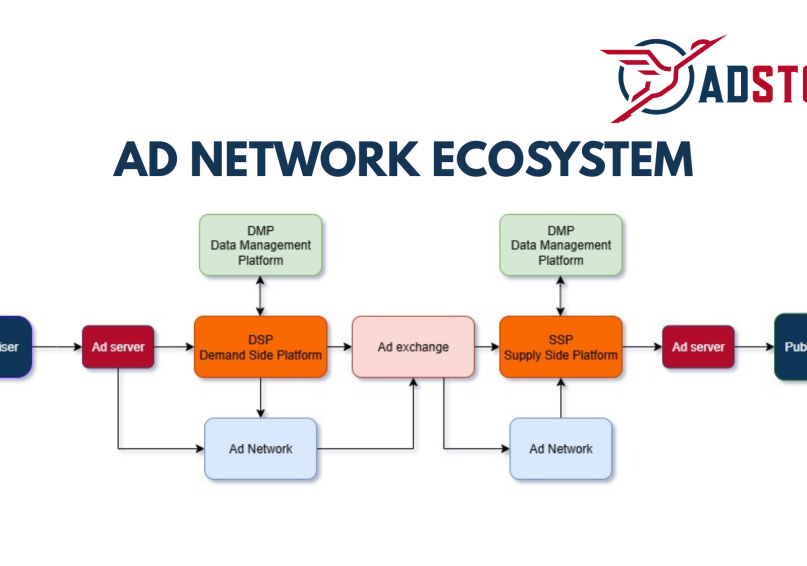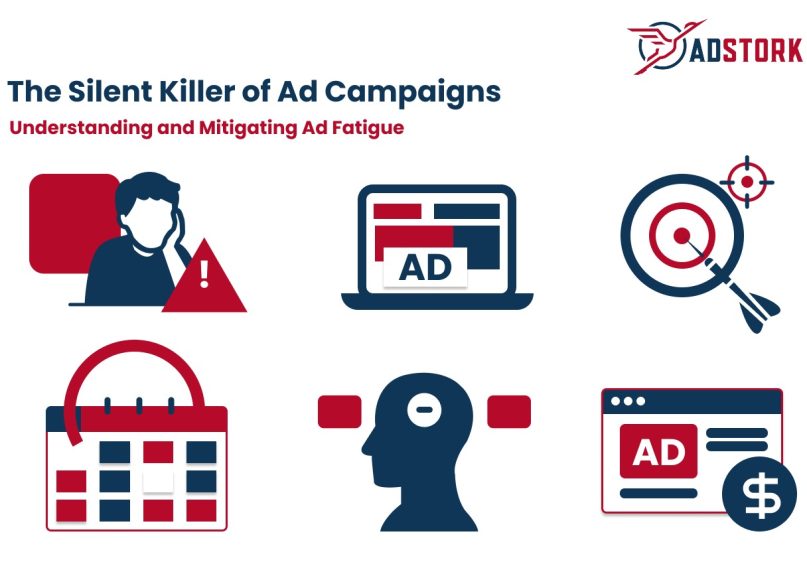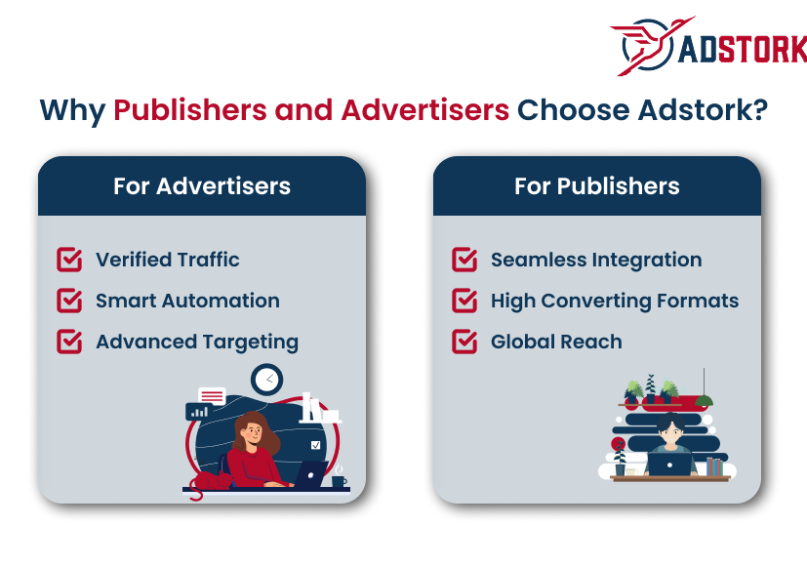
Interstitial Ad Format
Interstitial Adformat
Interstitial ads are immersive, full-screen advertisements that appear between content transitions, offering advertisers a highly engaging way to reach their audience. Unlike traditional ads, interstitials take over the entire screen, delivering your message with maximum visibility. Their strategic placement during natural pauses ensures a seamless user experience while capturing attention effectively.
Benefits of Interstitial Ads:
High Engagement Rates: Interstitial ads command user attention by covering the entire screen, leading to higher click-through rates (CTR) and increased engagement. Their visually impactful nature makes them ideal for driving conversions and boosting brand awareness.
Seamless User Integration: These ads are displayed during natural breaks, such as between app levels or page transitions, ensuring they do not disrupt the user’s browsing or app experience.
Versatile Ad Format: Interstitial ads support a variety of creative formats, including static images, videos, and interactive elements. This flexibility allows advertisers to craft compelling campaigns tailored to their target audience.
Wide Device Compatibility: Interstitial ads work seamlessly across devices, including desktops, tablets, and mobile phones, ensuring consistent delivery and engagement no matter the platform.
Increased Revenue Potential: Publishers benefit from the premium nature of interstitial ads, which typically command higher CPMs due to their full-screen visibility and high engagement rates.
Customizable Timing and Frequency: Advertisers can control when and how often interstitial ads appear, ensuring they are shown at optimal moments for user engagement without being overly intrusive.
Improved User Retention: By leveraging strategic placement and engaging creatives, interstitial ads can drive user actions like app installs, website visits, or product purchases, all while maintaining a positive user experience.
Interstitial ads are a powerful tool for advertisers seeking impactful and engaging ways to connect with their audience and for publishers looking to maximize their ad revenue. By utilizing this dynamic ad format, you can achieve a perfect balance between user experience and advertising effectiveness.
Why Choose Adstork? – The Leading Ad Network
Advanced Ad Safety and Fraud Prevention
Optimized Ad Performance Tools
Comprehensive Analytics
Global Reach with Massive Traffic Volume
Flexible Automation Options
Dedicated Partner Support
How we run Adstork?
Pay for Qualified Expertise
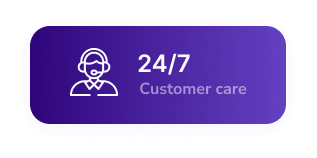


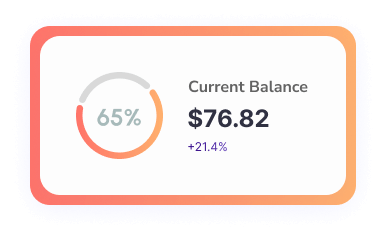
Frequently Asked Questions
What are interstitial ads?
Why should I use interstitial ads?
High Visibility: Full-screen format ensures maximum user attention.
Enhanced Engagement: Interactive and visually engaging formats lead to higher click-through rates.
Effective for App Monetization: Ideal for apps and games, generating revenue without disrupting user flow.
Flexibility: Supports various media types like static images, animations, and videos.
What types of interstitial ads are available?
Static Interstitials: Full-screen images or graphics.
Video Interstitials: Full-screen video ads.
Interactive Interstitials: Includes elements like quizzes, polls, or clickable hotspots.
Playable Ads: Interactive demo-like ads, often used for games.
When do interstitial ads appear?
Between app or game levels.
During transitions, such as navigating between pages or loading content.
After completing an activity, like a purchase or form submission.
What are the specifications for interstitial ads?
Image Ads: PNG, JPEG, or GIF, with a resolution of at least 1080x1920 pixels.
Video Ads: MP4 format, with a recommended length of 15-30 seconds and a maximum file size of 150 MB.
Playable Ads: HTML5 format, optimized for interactivity and responsiveness.
Aspect Ratio: 9:16 (vertical) or 16:9 (horizontal) depending on user orientation.
How do I create interstitial ads?
Choose your ad format (image, video, or playable).
Design your creative using tools like Adobe Creative Cloud or HTML5 editors.
Test the ad for responsiveness and compatibility across devices.
Upload your ad to our platform and set your targeting options.
What are the best practices for interstitial ads?
Timing Matters: Show ads during natural breaks in user activity to avoid frustration.
Clear CTAs: Include compelling and actionable calls to action.
High-Quality Design: Use visually appealing and engaging elements.
Optimize Load Speed: Ensure ads load quickly to maintain user experience.
Avoid Overuse: Limit the frequency of interstitial ads to prevent annoyance.
How are interstitial ads targeted?
Behavioral Targeting: Based on user activities and interests.
Demographics: Age, gender, income, and more.
Geographic Location: Target specific cities, regions, or countries.
App/Website Context: Ads relevant to the content or activity of the app or website.
Device Type: Target users on mobile, tablet, or desktop devices.
How do I measure the performance of interstitial ads?
Impressions: Number of times the ad was displayed.
Clicks: Number of times users interacted with the ad.
Click-Through Rate (CTR): Percentage of impressions that led to clicks.
Completion Rate: Percentage of users who viewed the entire ad.
Conversions: Actions taken after interacting with the ad (e.g., purchases or sign-ups).
Revenue Metrics: Earnings from cost-per-click (CPC) or cost-per-thousand impressions (CPM).
What happens if my interstitial ad gets rejected?
Can I edit my interstitial ads during an active campaign?
Are interstitial ads mobile-friendly?
What are the pricing models for interstitial ads?
CPC (Cost-Per-Click): Pay for each click your ad receives.
CPM (Cost-Per-Thousand Impressions): Pay for every 1,000 ad views.
CPA (Cost-Per-Action): Pay only for specific actions like purchases or sign-ups.
What is the minimum budget for interstitial ads?
What payment methods do you accept for interstitial ads?
Credit or debit cards.
PayPal.
Bank transfers.
Billing is based on your chosen pricing model and is processed after the campaign goes live.
What platforms support interstitial ads?
Mobile apps (gaming and non-gaming).
Websites with transitional or loading pages.
Social media platforms.
Video streaming apps.


